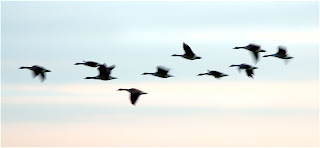The relatively mild weather of southwest England continues, and according to one dog walker I spoke to on Stanpit Marsh, Dorset, it's set to continue until at least the end of the month. I had arrived on the marsh during mid afternoon with my longest lens, but no real idea of what I intended to shoot. I took a number of "warm-up" shots before coming across the same chap who I bumped into a couple of weeks ago, counting the ponies. I ask him if he is still to arrive at a consistent count, but he tells me that he counts them every Saturday. He also tells me that a Glossy Ibis is still on the marsh and directs me to the general area.
He is, of course, right, but the bird remains tantalisingly out of range of my longest lens, even with a teleconverter attached. It's while I wait for the ibis to move closer (it never does) I turn and see a lone marsh pony - rim lit, along with the reeds - against the setting sun.
Once the sun dips below the horizon I decide to call it a day. I chat for a while with someone out walking and taking the crisp evening air, but it is just as we are both about to leave that a skein of Canada Geese appear from the North. I instinctively raise the camera to my eye and make a number of exposures as I follow their flight. In my haste I failed to make appropriate camera settings, and shot hand held with a shutter speed that was far too low to get sharp images. Not deterred, I open the files on my computer and find that some of these images have a pleasing blur, giving the feeling of movement to the photograph. Sometimes an error can still produce a useable photograph.
Both images:
300mm f/2.8 AF-S VR Nikkor with TC-14E converter.
Top: 1/500 second at f/5. + 0.67 EV compensation. ISO 400
Bottom: 1/60 second at f/4.5. + 1 stop EV compensation. ISO 400
© 2011


1 comment:
Wonderful. :-) P
Post a Comment